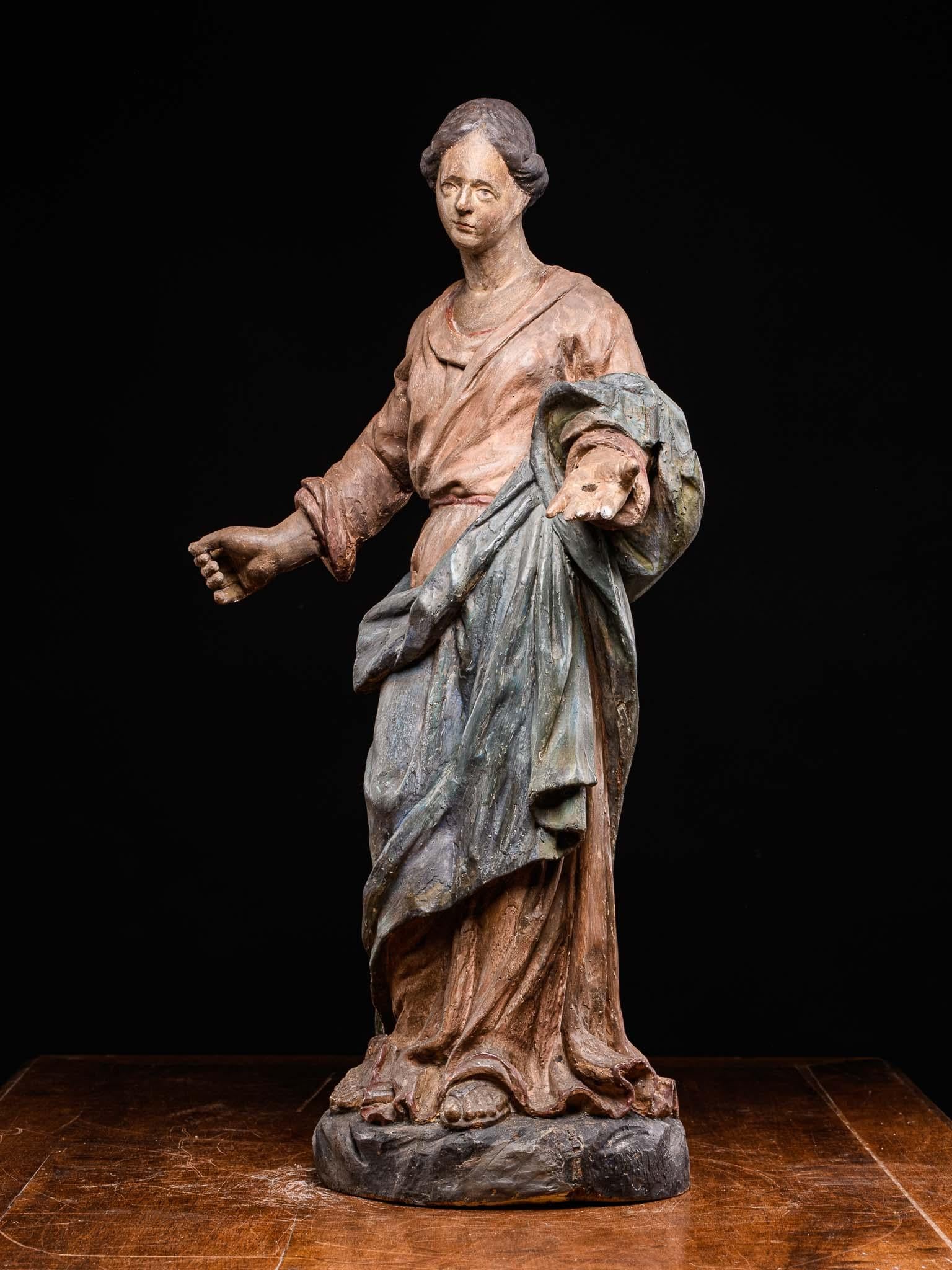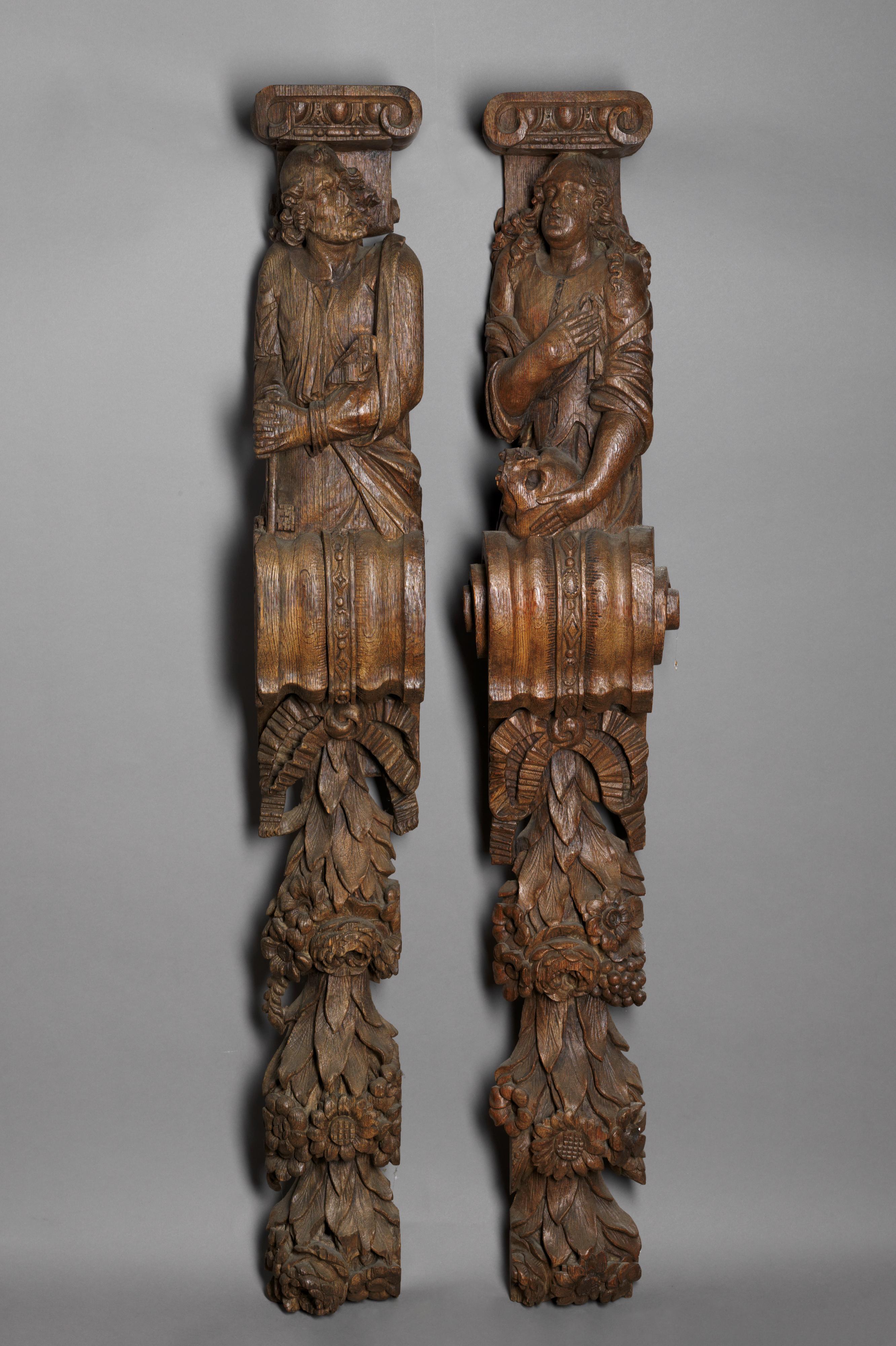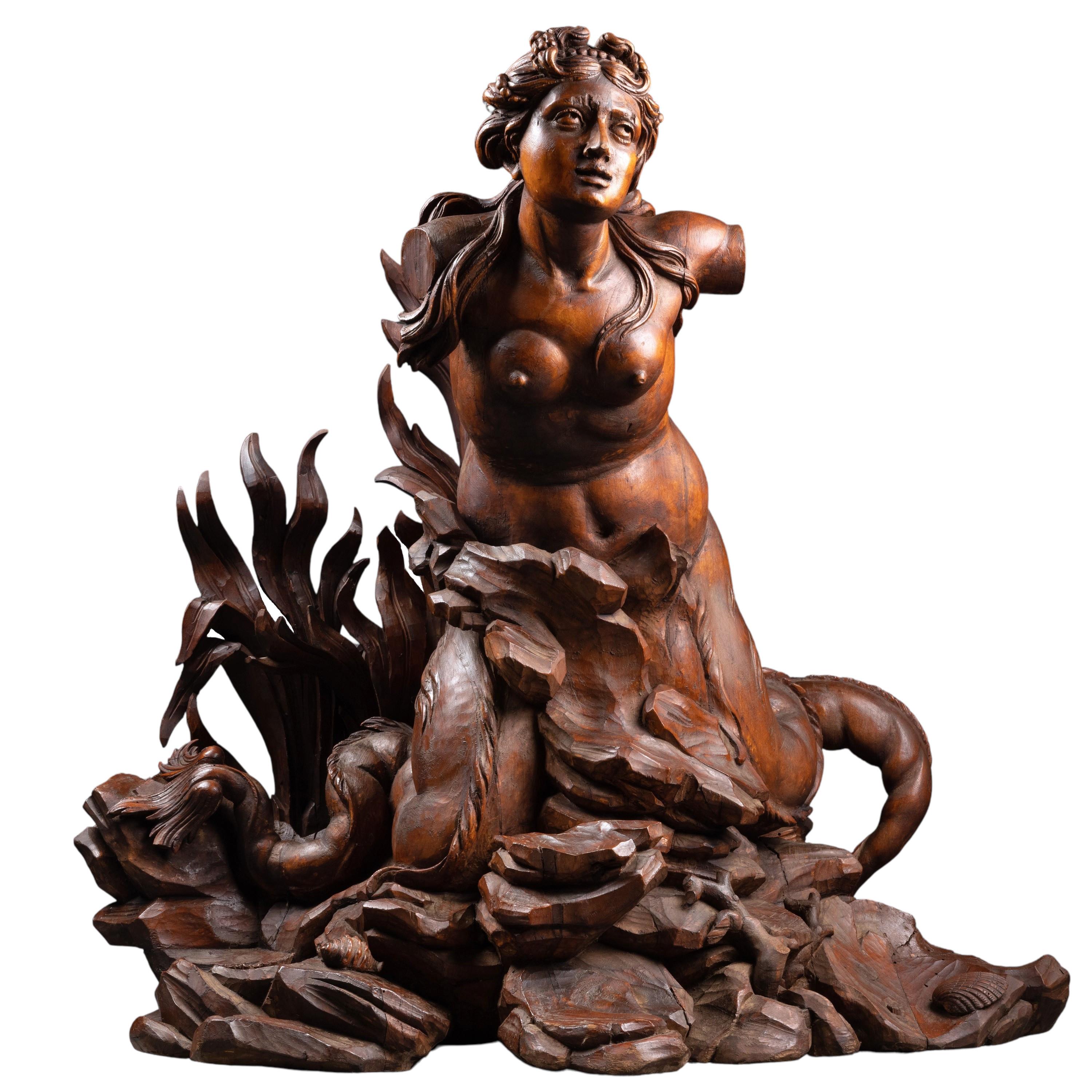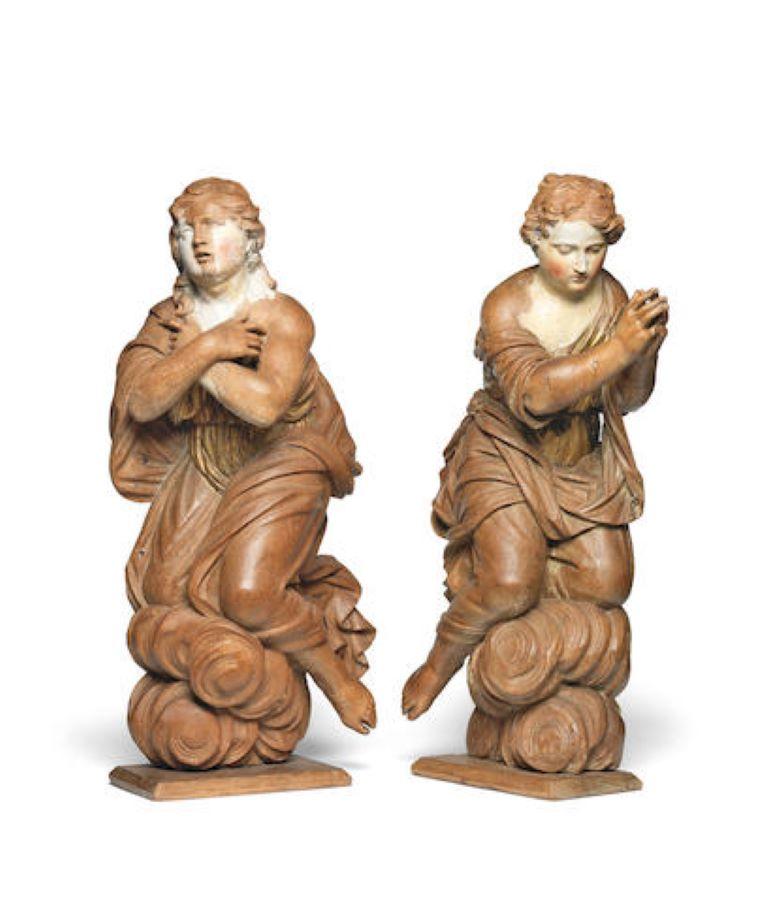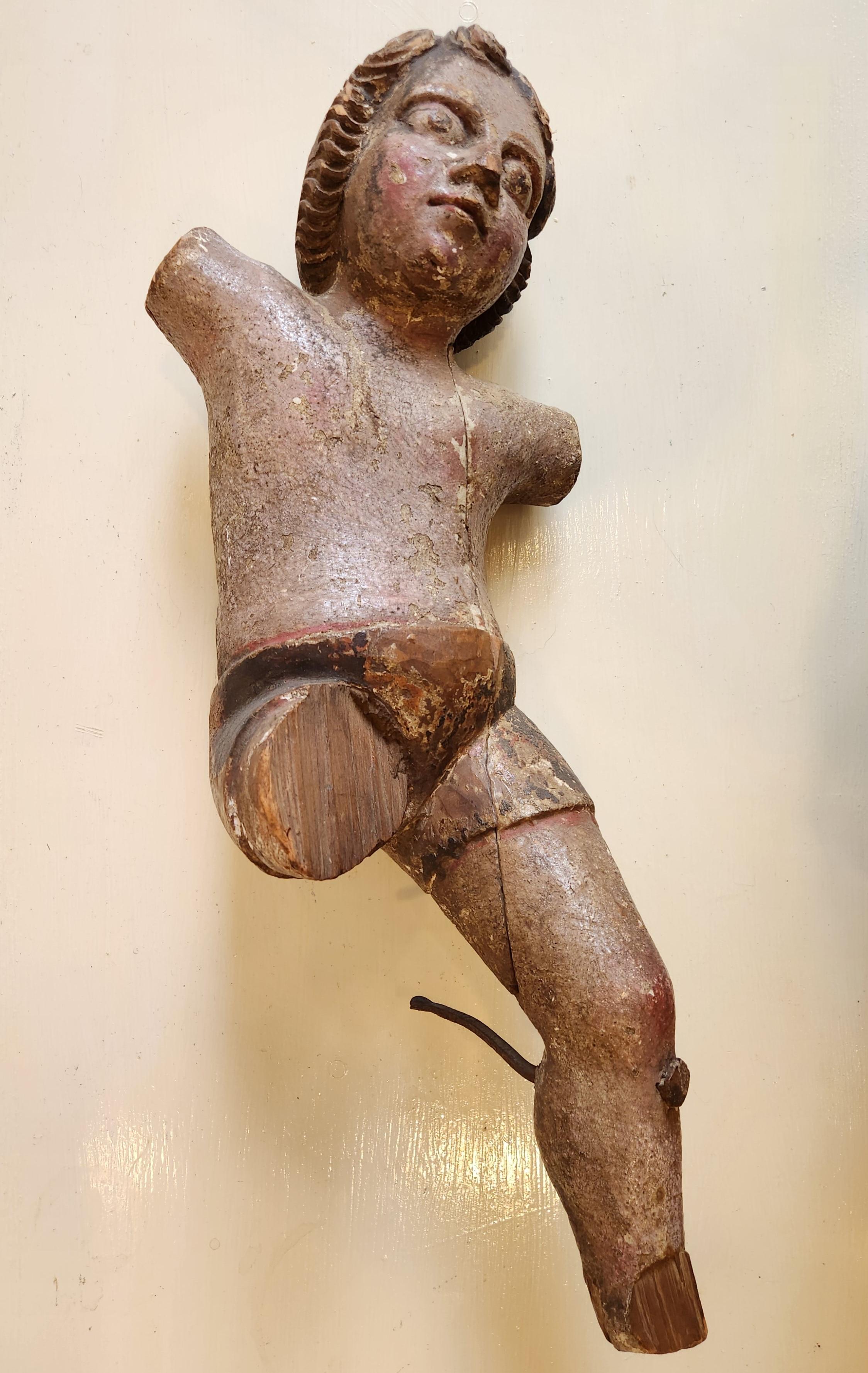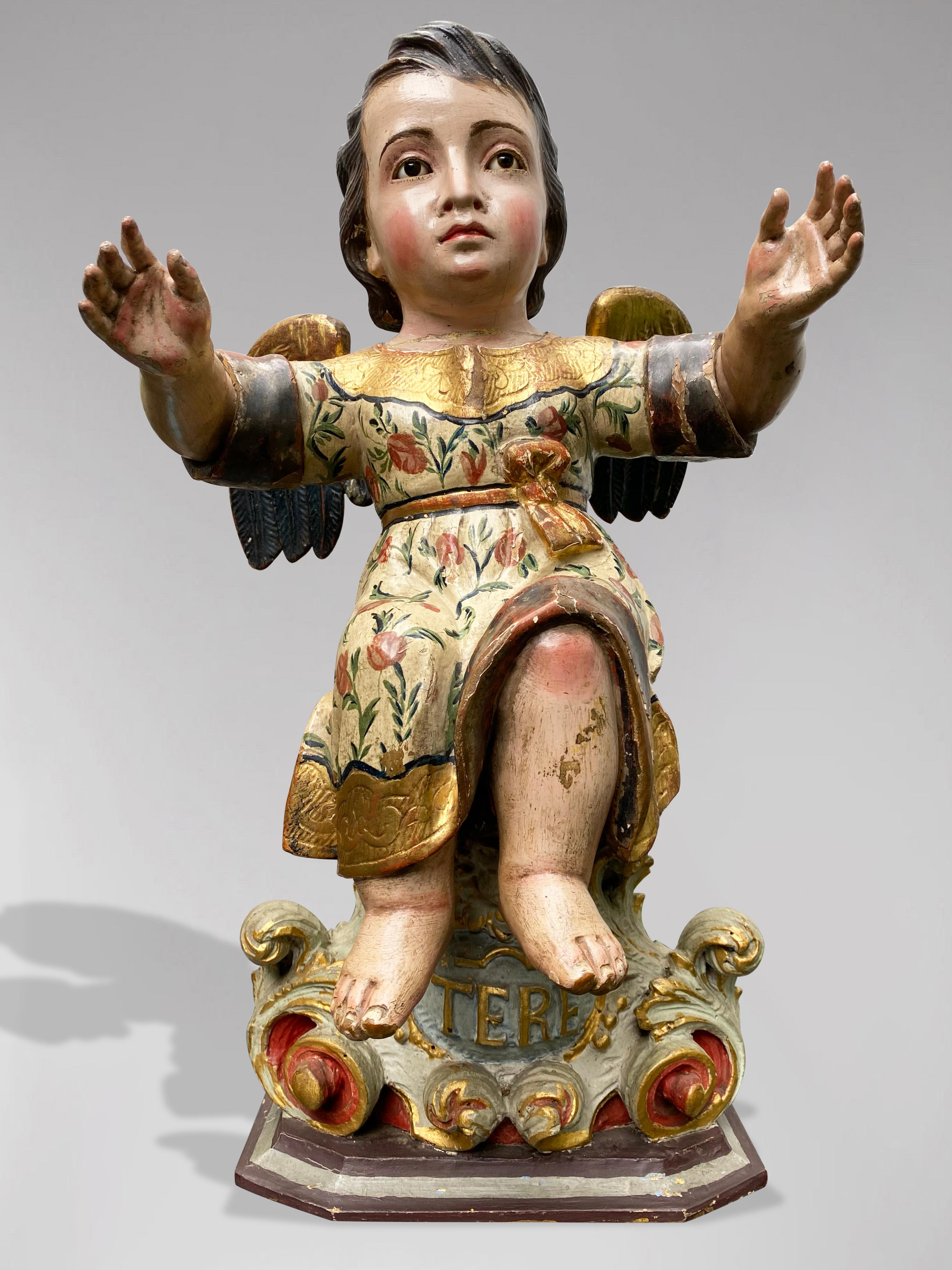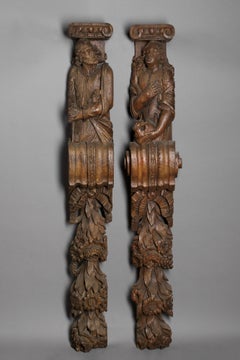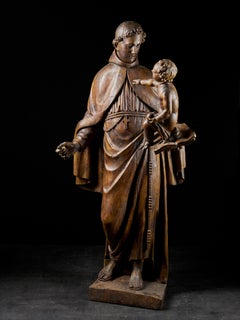
Large fruitwood Christ corpus, early 18th century
View Similar Items
1 of 4
UnknownLarge fruitwood Christ corpus, early 18th century
About the Item
- Dimensions:Height: 21.07 in (53.5 cm)Width: 13.59 in (34.5 cm)
- Medium:
- Movement & Style:
- Period:
- Condition:
- Gallery Location:Paris, FR
- Reference Number:1stDibs: LU80812365283
You May Also Like
- 17th C Polychromed fruitwood carved statue depicting Madonna, France.Located in brussel, BEAn exceptionally beautiful antique French wood carving, made in the 17th century. It depicts Madonna standing with open offering arms .The...Category
17th Century Baroque Figurative Sculptures
MaterialsWood
$2,499 Sale Price40% Off - 17th C, Two Wooden Pilasters, Representing Penitents St Peter and Mary MagdaleneLocated in brussel, BEThe pilasters were probably ornaments of a confessional made of wood.Category
17th Century Baroque Figurative Sculptures
MaterialsWood
- Late 17th C, Baroque, Saint, Italian School, Wooden Sculpture of Saint AnthonyLocated in brussel, BEThe impressive life-size statue of St. Anthony (Lisbon, 1195 – Padua, 1231) used to be probably in a church or monastery of the mendicant order of the Franciscans. You can immediately recognize a Franciscan monk by his brown habit, brown hooded cloak...Category
17th Century Baroque Figurative Sculptures
MaterialsWood
- A late 17th Italian carved limewood figure of Mermaid, circle of Filippo ParodiLocated in PARIS, FRA late 17th c. Italian carved figure of Mermaid, Circle of Filippo Parodi (Genoa, 1630 – July 22, 1702) Dimensions: h. 29.13 in, w. 30.31 in, p. 18.9 in (at the base) Magnificent Italian Baroque sculpture depicting a mermaid seated on the rock. All the virtuosity of the sculptor unfolds in this carved group. The fantastic creature is featured seated, the upper part of the body darting forward, the head looking upwards. Sophisticated hairstyle with rows of pearls intertwined in her hair, her loose locks fly in the wind and bring movement to the whole sculpture. The wide-open eyes with hollowed-out pupils make it possible to follow the mermaid's gaze, towards the sky. The half-open mouth further magnifies this bewitching and seductive attitude. Its long double tail ending in fins wraps on either side of a rocky mound strewn with objects evoking the underwater world: seashells and shells, branches of coral. The ornamental richness combined with the great care taken in its execution make it a work in which the splendor of Italian Baroque art unfolds in such characteristic scenic movement. The composition betrays a strong influence from Filippo Parodi, the leader of Genoese Baroque sculpture, and points to an artist from his circle. Our sculpture was probably part of a decorative monumental palace. The iconographic theme evoking the marine world finds its application in the numerous fountains and artificial grottos, designed in Italian palaces at the turn of the 17th and 18th centuries. Giacomo Filippo Parodi (Genoa 1630 – July 22, 1702) was an Italian Baroque sculptor of the Genoese school, who introduced Bernini's aesthetic to Genoa. In his youth fathers a first apprenticeship with a carpenter, he went to Rome where he became a pupil of Bernini. He had the opportunity to admire in person the works and style of the French sculptor Pierre Puget...Category
Late 17th Century Baroque Figurative Sculptures
MaterialsWood
$19,294 Sale Price20% Off - Mirrors Rome Luigi XIV 18th Century Gold Wood Italy Glass Art QualityLocated in Riva del Garda, ITPair of large Louis XIV mirrors Italy (Rome), early 18th century Carved and gilded wood, with original mercury silvered glass mirror Height cm. ...Category
18th Century Baroque Sculptures
MaterialsGold
- A pair of late 17th century Northern European carved oak angelsLocated in Bath, SomersetA pair of carved oak angels, circa 1700, with a lovely warm patina and faint traces of polychrome to the face and gilding to the body. The angels are both kn...Category
17th Century Baroque Figurative Sculptures
MaterialsOak
$5,608 Sale Price20% Off
